No McDonalds, a young population, and a King who is rumored to be gay… after 3 weeks traveling in this fascinating country, here are our 15 interesting facts about Cambodia we bet you didn't know!
Oh darling Cambodia, how we fell in love with you!
This is one place we'd come back to in a heartbeat. Highlights included Phnom Penh, Siem Reap (oh those temples!), and the coastline of Sihanoukville. Cambodia is a country that offers so much in terms of nature, culture, a rich diverse southeast Asian cuisine, beaches and so much more.
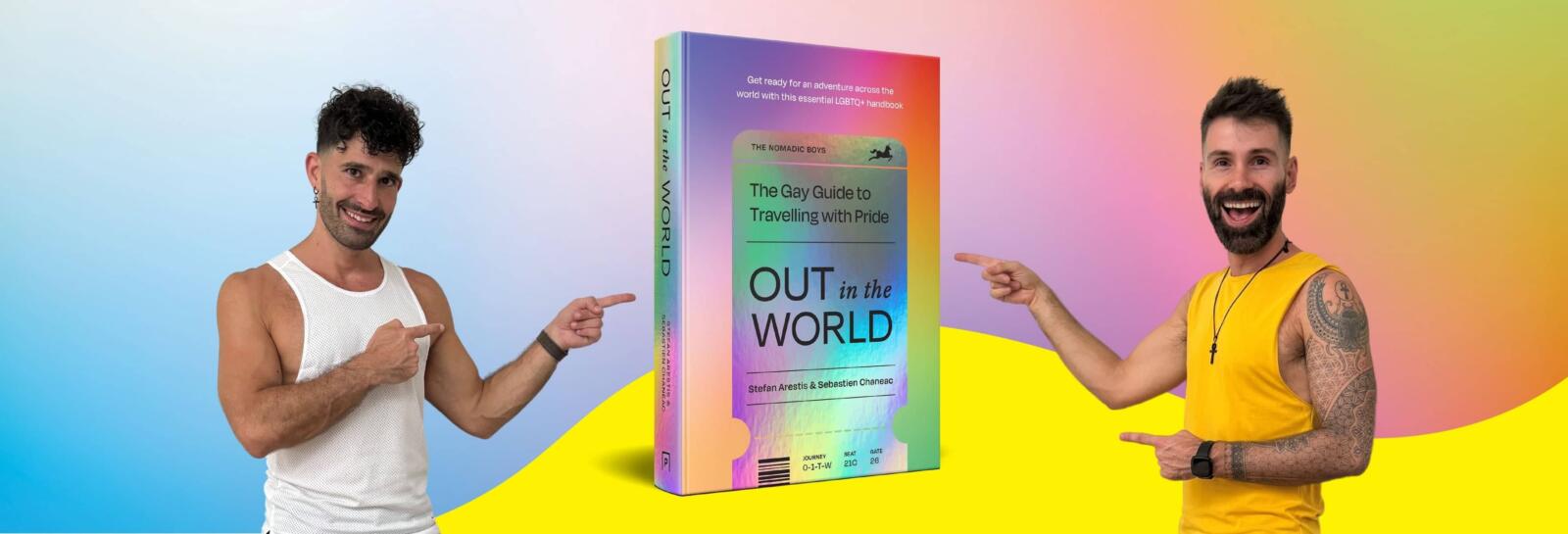
Cambodia is surprisingly gay friendly as well, in fact, we rate it as the second-most gay friendly country in Asia, due to never having any laws against homosexuality and some great gay scenes in the larger cities. While the King may or may not be gay (see further on in this post for details!) he is definitely instrumental in championing LGBTQ rights in his country.
These are our most interesting facts about Cambodia that for us summarise just how fascinating, beautiful, and incredible this country is. We hope it inspires you to fall in love with it as much as we did.
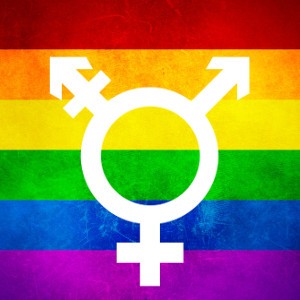
Advice for LGBTQ travelers to Cambodia
Cambodia is super gay friendly, in our opinion one of the most LGBTQ friendly places in Asia, up there with Thailand and Taiwan. We felt very secure traveling around Cambodia as a gay couple and never experienced any problems getting a double bed in hotels. This is, after all, a country that has never had any anti-gay laws in its history and as of 2018 took a big step to gay marriage by introducing the Declaration of Family Relationship for same-sex couples.
1. Cambodia has the largest religious monument in the world
The most obvious and popular interesting fact about Cambodia is, of course, Angkor Wat. Angkor Wat is the main reason tourists flock in their numbers to Cambodia. It is the world's largest religious building and considered one of the wonders of the world. In 1992 it was added to the UNESCO World Heritage list.
Originally built at the beginning of the 12th century as a Hindu temple, it was converted into a Buddhist temple near the end of the 12th century. It's a classic example of Khmer architecture, has become a national symbol of Cambodia and even appears on the country's flag. Even though it was originally dedicated to the Hindu god Vishnu, once it became a Buddhist temple it also played a part in converting Cambodia into a Buddhist country.
Today Angkor Wat is an important pilgrimage site for Buddhists from around the world, as well as a major tourist attraction, receiving more than 2.6 million visitors a year!

2. Khmer is the only official language of Cambodia
While there are around 19 indigenous languages spoken within Cambodia, Khmer is the only official script and language. The name Cambodia comes from the French “Cambodge” which is how they said the Khmer word Kampuchea. Even today, westerners tend to call the country Cambodia while Cambodians and other Asian people are more likely to call it the “Country of Kampuchea”.
The Khmer language comes from the Khmer people, a Southeast Asian ethnic group native to Cambodia. While anyone who lives in Cambodia can be seen as being Cambodian, the title of being Khmer is used for the 97% of the population that are ethnically Khmer, if that makes sense?
Since the Khmer people make up 97% of the population it makes sense that the Khmer language is the most widely spoken in the country. It is quite difficult for foreigners to learn, but hopefully this video should help you get started!
3. There has never been a McDonald's in Cambodia
Our favourite interesting fact about Cambodia is that it is one of the few countries in the world which has never had a McDonald's, along with Ghana and Yemen. Other countries may have had it once then kicked them out (like Iceland and Bolivia), but in Cambodia, McDonald's has never even set foot!
Theories on why there is no McDonald's in Cambodia include, well, there not being enough demand for it as well as possible pressure from the Cambodian franchise owner of Burger King not wanting any competition…
If you're heading to Cambodia there are so many delicious local delicacies to try that you won't need to be looking for a Big Mac. Don't make the mistake of asking online either, as you might get a bit of gentle teasing. While there is no proper McDonald's in Cambodia, they do have Burger King, KFC and their own McDonald's equivalent called “Lucky Burger”:
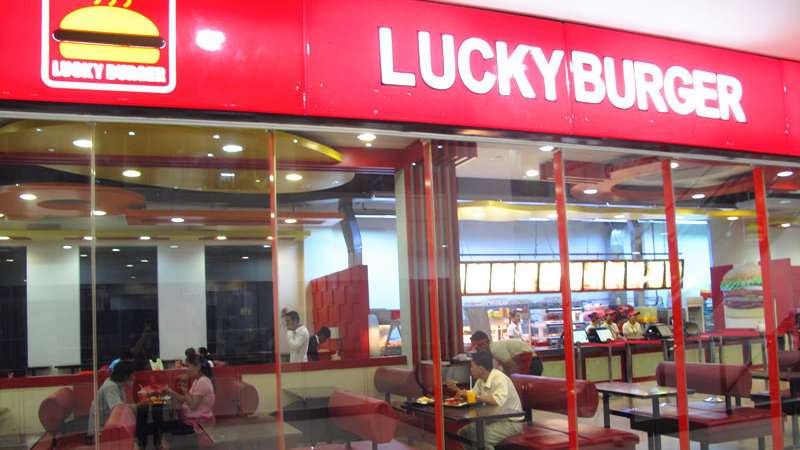
4. Cambodia has a gay king?
We were welcomed to the “Kingdom of Cambodia” as we touched down at Phnom Penh international airport. Cambodia has a constitutional monarch as head of state, elected by the Royal Throne Council. Currently, the monarch is an ex ballet dancer and unmarried 51-year-old, King Norodom Sihamoni.
There are many well-reported rumors he's gay, especially after his mother (Queen Monineath) flinched when asked if he is likely to get married soon and exclaimed:
“”Wife?” she asked. “He only feels Buddhist!”
However, nothing has ever been officially said and King Sihamoni is a very private monarch.
Putting gossip and rumours aside, we were pleasantly surprised by how gay friendly Cambodia is, particularly the gay scene of Phnom Penh and the gay bars of Siem Reap. The previous King Norodom Sihanouk also came out in support of gay marriages in Cambodia during his rule.
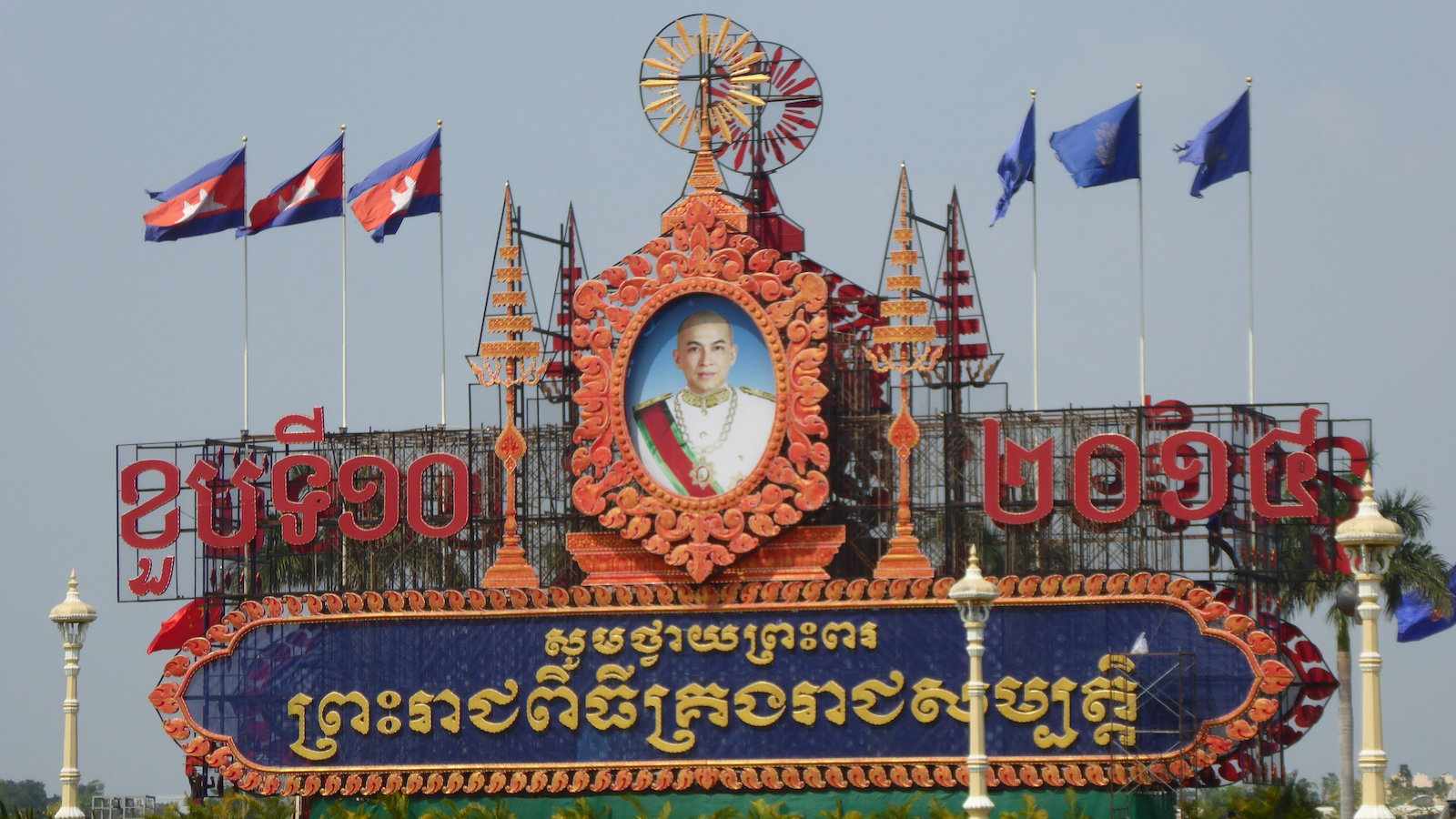
5. A new name for every new Cambodian government
It's no secret that Cambodia has had a turbulent past. The country has been changing its name whenever a new government came into power within the past 60 years, starting and ending with “The Kingdom of Cambodia.”
The monarchy was overthrown in a military coup in 1970, partly because of the King's tolerance towards Vietnamese and Viet Cong troops' activity within Cambodian borders. This military dictatorship was named the Khmer Republic. Next came the Khmer Rouge regime, or Communist Party of Kampuchea, which named the country “Democratic Kampuchea” while committing acts of genocide.
Vietnam invaded Cambodia in response to a Khmer Rouge invasion attempt and the People's Republic of Kampuchea was set up by Cambodians backed by Vietnam. After the dismemberment of the Soviet bloc in Europe, Vietnam had less communist support and withdrew from Cambodia, which set about making some changes, including the new name of The State of Cambodia. The United Nations helped with peace negotiations and eventually the monarchy was reinstated and the country became the Kingdom of Cambodia once again.
- The Kingdom of Cambodia: 1953-1970 (ruled by a monarchy)
- The Khmer Republic: 1970-1975 (ruled by President Lon Nol's government)
- Democratic Kampuchea: 1975-1979 (under Pol Pot's terrible Khmer Rouge regime)
- The People's Republic of Kampuchea: 1979-1989 (under the rule of the Vietnamese sponsored government)
- The State of Cambodia: 1989-1993 (under the United Nations Transitional Assembly)
- The Kingdom of Cambodia: 1993-present (under the restored constitutional monarchy)
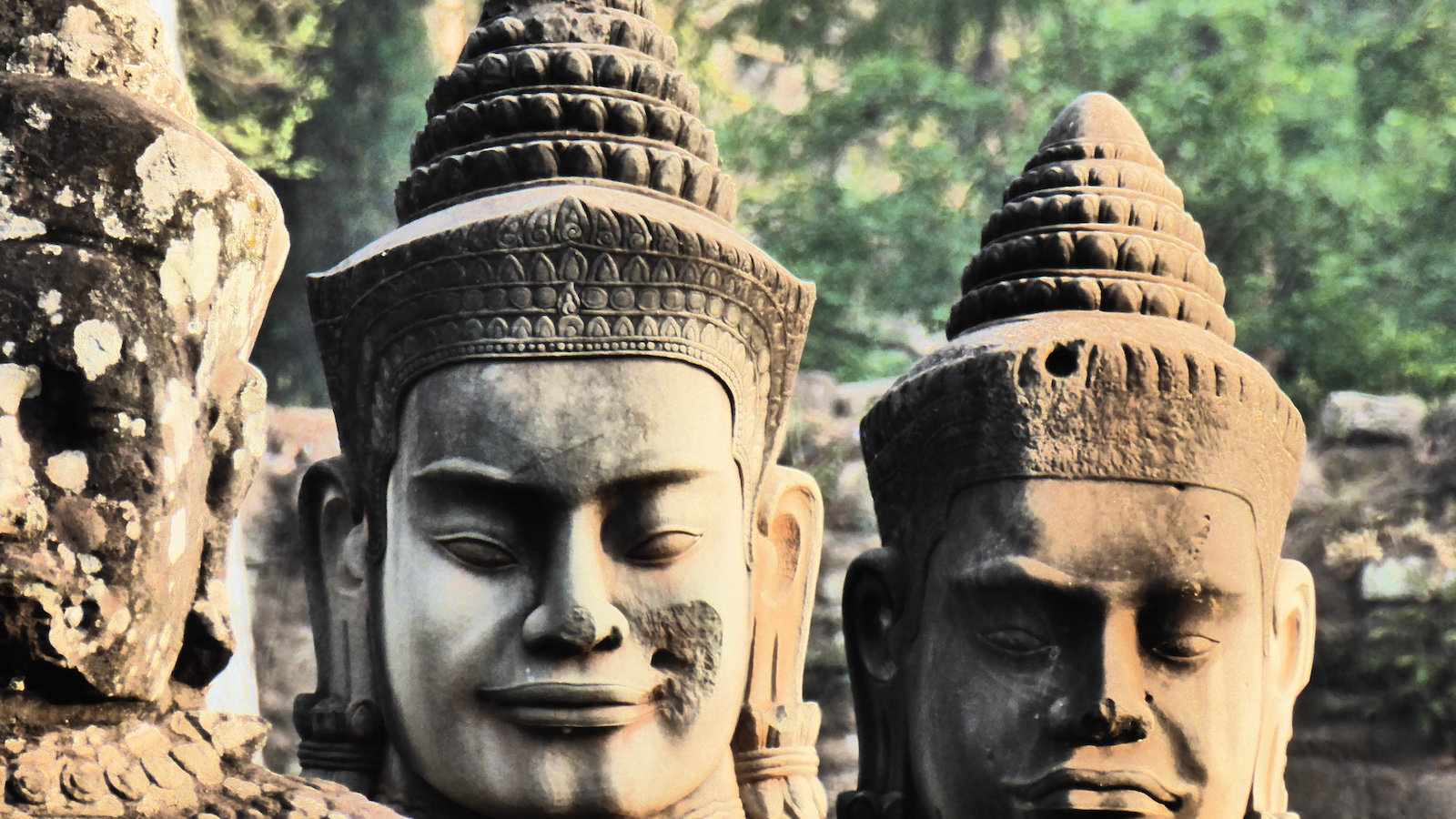
6. 95% of Cambodians are Buddhists
Buddhism is the official religion of Cambodia and it's estimated that a whopping 95% of the population practice Theravada Buddhism. Buddhism has been practiced in Cambodia since at least the 5th century AD and has been the state religion from the 13th century until today – except for during the Khmer Rouge regime when practicing religion was forbidden.
Buddhist temples are called Wats, and there are many of these beautiful buildings throughout the country, Angkor Wat being the most famous, of course. Many men become monks at least temporarily for a year, or sometimes longer. Cambodians practice Buddhism by doing actions to gain merit, to ensure they reach nirvana. Some ways of earning merit include donating money to those in need, providing goods and/or food to the monks of the wats or (especially for children) doing chores in the wats.
Most of the holidays celebrated in Cambodia are linked to Buddhism, like the New Year festival which is celebrated in April (more on that soon!) and Pchum Ben, where Cambodians pay their respects to deceased ancestors.
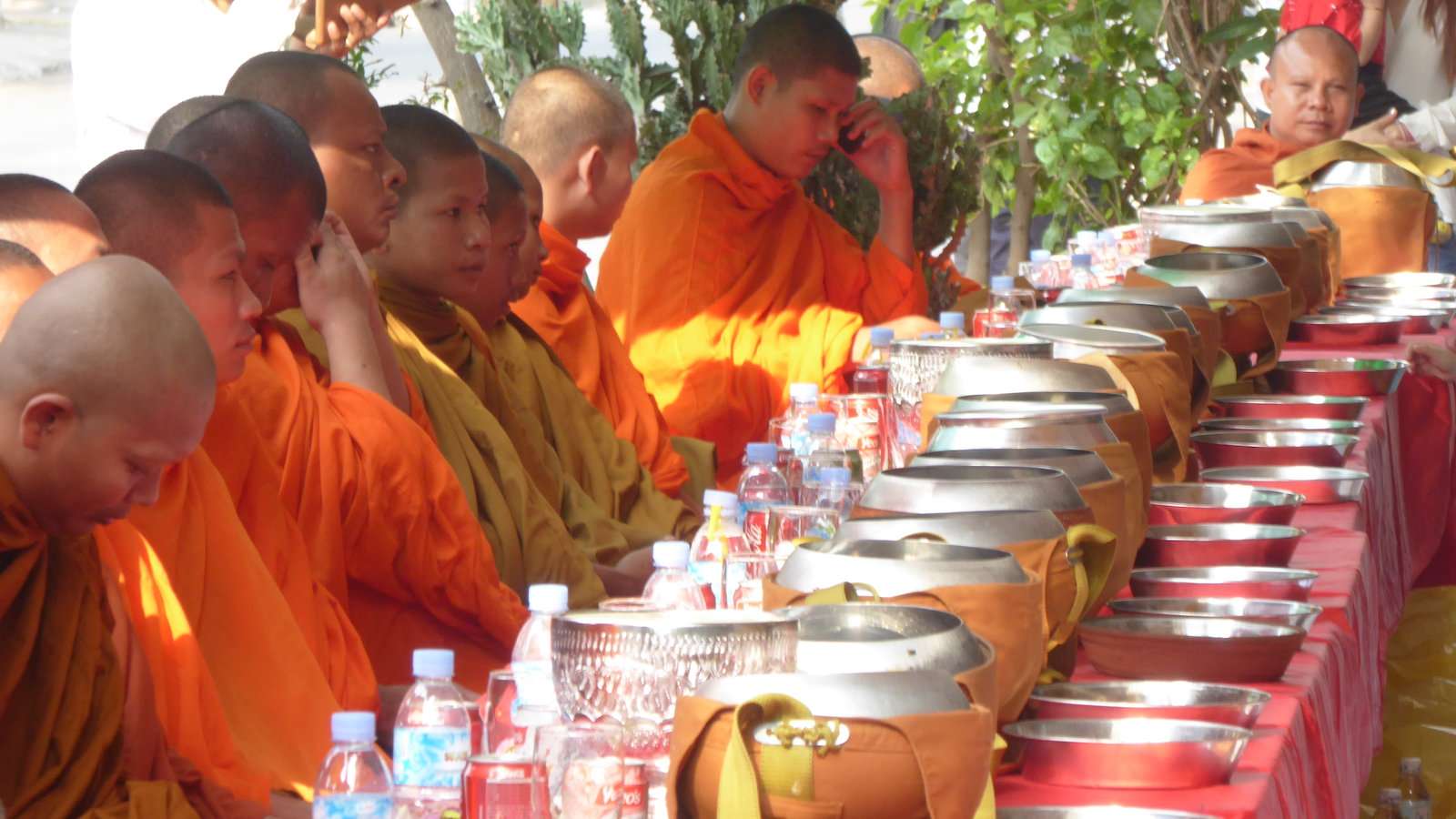
7. Cambodia has one of the youngest population in Southeast Asia
Quite a sombre interesting fact about Cambodia is that it has a very young population with around one-third of its population younger than 15 years old and a distinct lack of people over the age of 50. During the terrible Khmer Rouge rule under Pol Pot in 1975-79, around 2-3 million of the then 8 million population was literally battered to death: bullets were considered too expensive to use!
We visited the “Killing Fields” near Phnom Penh and one of the most striking and harrowing images is a tree where Khmer Rouge soldiers would quite literally bash babies and infants to death against the trunk before throwing them into a nearby pit.
We strongly advise all visitors to visit the Killing Fields near Phnom Penh and the nearby former school which was converted into a torture building (called S21) to get a feel for Cambodia's dark history during the Khmer Rouge years.
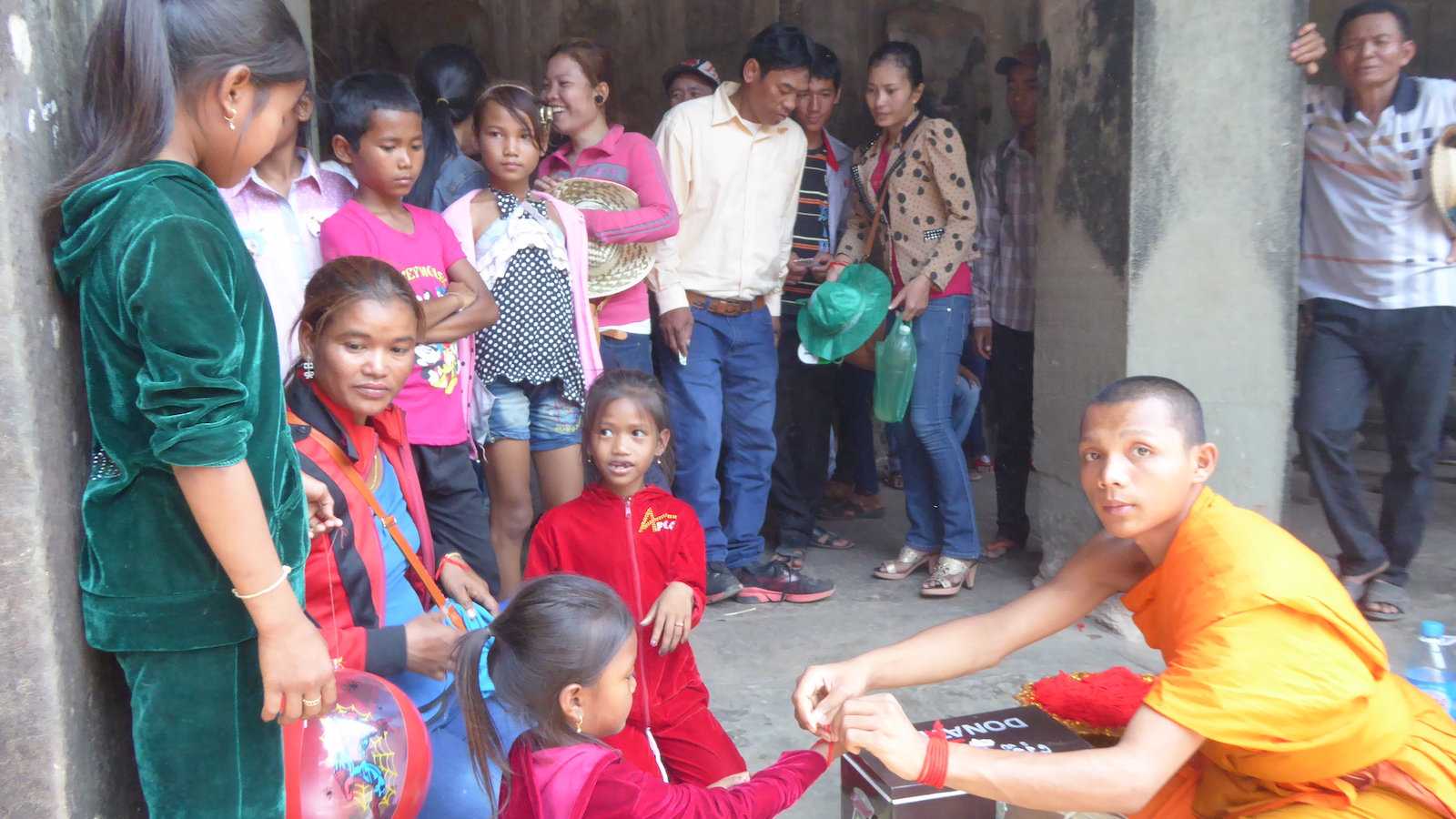
8. The only flag featuring a building
The Cambodian flag is the only flag in the world featuring a building. The building, of course, is the country's famous world wonder, Angkor Wat. Like Cambodia itself, the flag has gone through multiple changes over the years, usually whenever there was a change in government, but Angkor Wat has remained part of the design in almost all instances.
No other country in the world has a building on the national flag, although some have natural symbols like a tree (Lebanon) or a leaf (Canada). This shows how important Angkor Wat is to the Cambodian people. Between 1863 and the present, there has only been one Cambodian flag that didn't feature Angkor Wat – during the United Nations Transitional Authority in Cambodia between 1992-1993.
During the different coups and regimes of Cambodia's civil war, details of the flag were changed, but an image of Angkor Wat always remained – even during the Khmer Rouge regime.
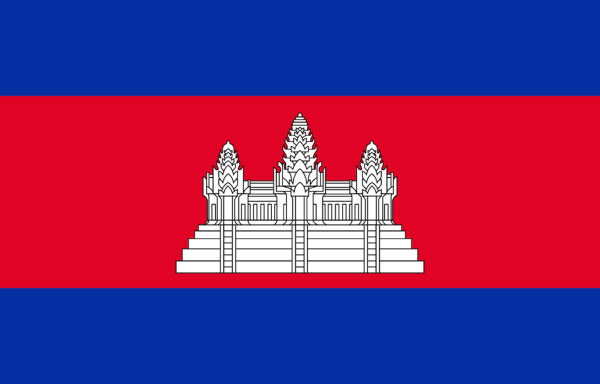
9. Cambodia has the smallest Francophone community in Southeast Asia
Between 1867 and 1953 Cambodia was part of the French Colonial Empire. During this period the French also controlled Vietnam and Laos, while Thailand was under British rule. During French colonization Cambodia saw infrastructure developments like the construction of roads and railways, as well as the French language being taught to the elite classes at first, then to the masses.
Upon Cambodia's independence from France in 1953, French remained widely taught in schools and was still used for official government processes. When the Khmer Rouge took control of Cambodia they systematically started killing educated Cambodians and since most education was conducted in French, the language was almost wiped out completely.
Today Cambodia is home to the smallest number of French-speaking people in Southeast Asia, although it is seeing somewhat of a revival in recent years. While English has become more popular and seen as a more useful international language all we can say is – vive la France!
10. Tourism is the 2nd largest source of revenue in Cambodia
With more than 2.6 million visitors just to Angkor Wat each year, it can hardly be surprising that tourism makes up the second largest source of revenue in Cambodia, after the textile industry. More than six million international visitors enter the country each year, and these numbers only continue to increase.
Even in the 60's (before the Khmer Rouge regime) Cambodia was one of the most famous tourist destinations in Southeast Asia, but it took some time after the Khmer Rouge for tourism to recover. Angkor Wat and Phnom Penh are the most popular destinations in the country, followed by Sihanoukville with its lovely beaches.
If you want to pretend you're Angelina Jolie/Lara Croft from the 2001 film “Lara Croft: Tomb Raider”, then you'll want to visit the Ta Prohm temple, which is quite close to Angkor Wat. You can visit both in the same day. Just avoid picking any jasmine, you don't want to fall into a booby trap!
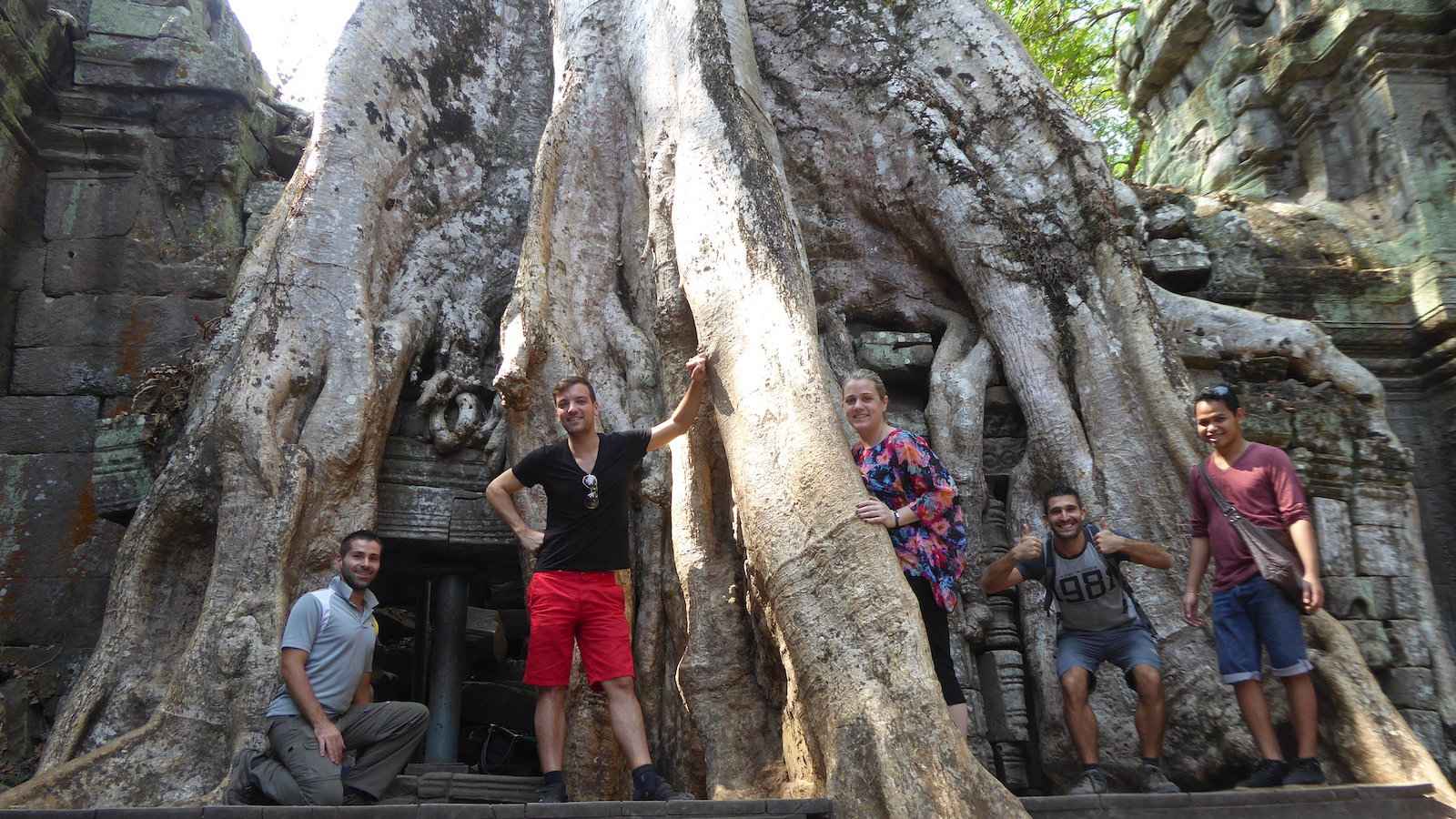
11. Tuk-tuks are the main means of transport used in Cambodia
In many Southeast Asian countries you will find versions of the tuk-tuk, also called an auto-rickshaw, a trishaw or a remorque. Cambodian tuk-tuks are slightly different to the ones in Thailand, which are usually a sort of three-wheeled contraption that look a little like a motorbike at the front, and are connected to the wider, covered passenger seating in the back.
Cambodian tuk-tuks, however, generally consist of a motorbike pulling a separate trailer where the passengers ride. Because of the country's French past, these tuk-tuks are also called remorques, the French word for trailer. Just like Thailand though, getting around by tuk-tuk is a fun and usually safer way to explore.
You can also get moto-taxis in Cambodia, where you sit on the back of a drivers motorbike, but the tuk-tuk is safer, in part because it's slightly slower. A tuk-tuk or remorque is also better for multiple people or if you have luggage with you – it's usually a bit difficult balancing a suitcase on your head on a motorbike!
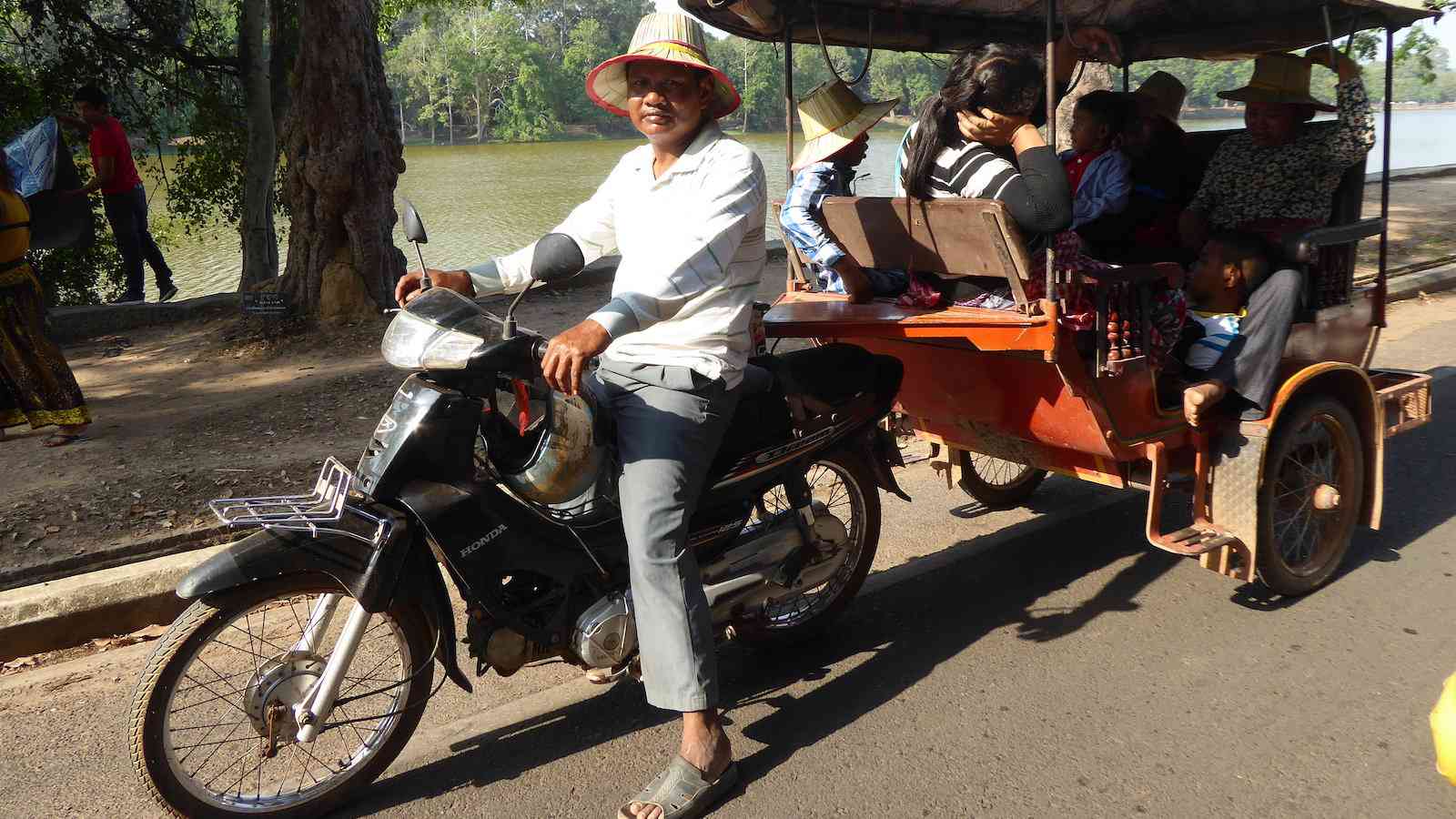
12. Tonlé Sap is the only river in the world that flows both ways seasonally
Tonlé Sap is the name of a lake and a river in Cambodia, which has the unique aspect of flowing in two different directions in a year. The Tonlé Sap River meets the Mekong River in Phnom Penh, which then travels through Vietnam to meet the Mekong River Delta, or at least, that's how it flows between November and May.
During the monsoon season, however, the river swells so much that the water turns the opposite direction and flows back into the Tonlé Sap Lake, making it nearly four times as large during this time. During the monsoon period, Tonlé Sap is the largest freshwater lake in Southeast Asia.
Similarly to the Nile River in Egypt, this monsoon period provides lots of food in the form of fish that come upstream, and farmers use the waters to irrigate their crops. Tonlé Sap is located near to Angkor Wat, and the abundance it provides is how the people were able to spend time building such grand monuments.

13. Birthdays are not celebrated in Cambodia
Well, they are amongst the westernized youth. But traditionally, birthdays are not really celebrated in Cambodia, particularly in the rural areas. Some older people may not even know their exact birth date and only recognize their birthday year or season.
Many refugees who fled Cambodia during the Khmer Rouge regime lost the family members who knew their birthdate and so had to make one up when filling out forms in western countries. Cambodians generally celebrate New Year and other holidays rather than making a big deal about birthdays. This is partly because the year of birth was seen as more important in many Asian cultures and everyone celebrated another year of life on the New Year.
So, while you may come across younger Cambodians who have birthday celebrations, don't assume that all Cambodians are going to make as big a deal about their birthdate as a diva like Stefan!

14. Cambodia has very expensive funerals
The average Cambodian funeral usually comes to around $9,000. This is a lot of money in a country where the average monthly salary is less than $100. Families usually have to group together their entire life savings and sell major possessions in order to fund a loved one's funeral.
The Cambodian funeral traditionally lasts for 3 or 7 days, during which the deceased's body is washed, dressed and kept in the family's home. On the third or seventh day a procession takes the body to a crematorium within a temple.
The prayers and chants at each funeral ceremony are led by the monks who essentially play the lead role as most Cambodians are Buddhist. In Cambodia the deceased is usually cremated, since Buddhists believe that this allows the soul to move on to the next stage of existence. It's also traditional to wear white for mourning in Cambodia, rather than black.
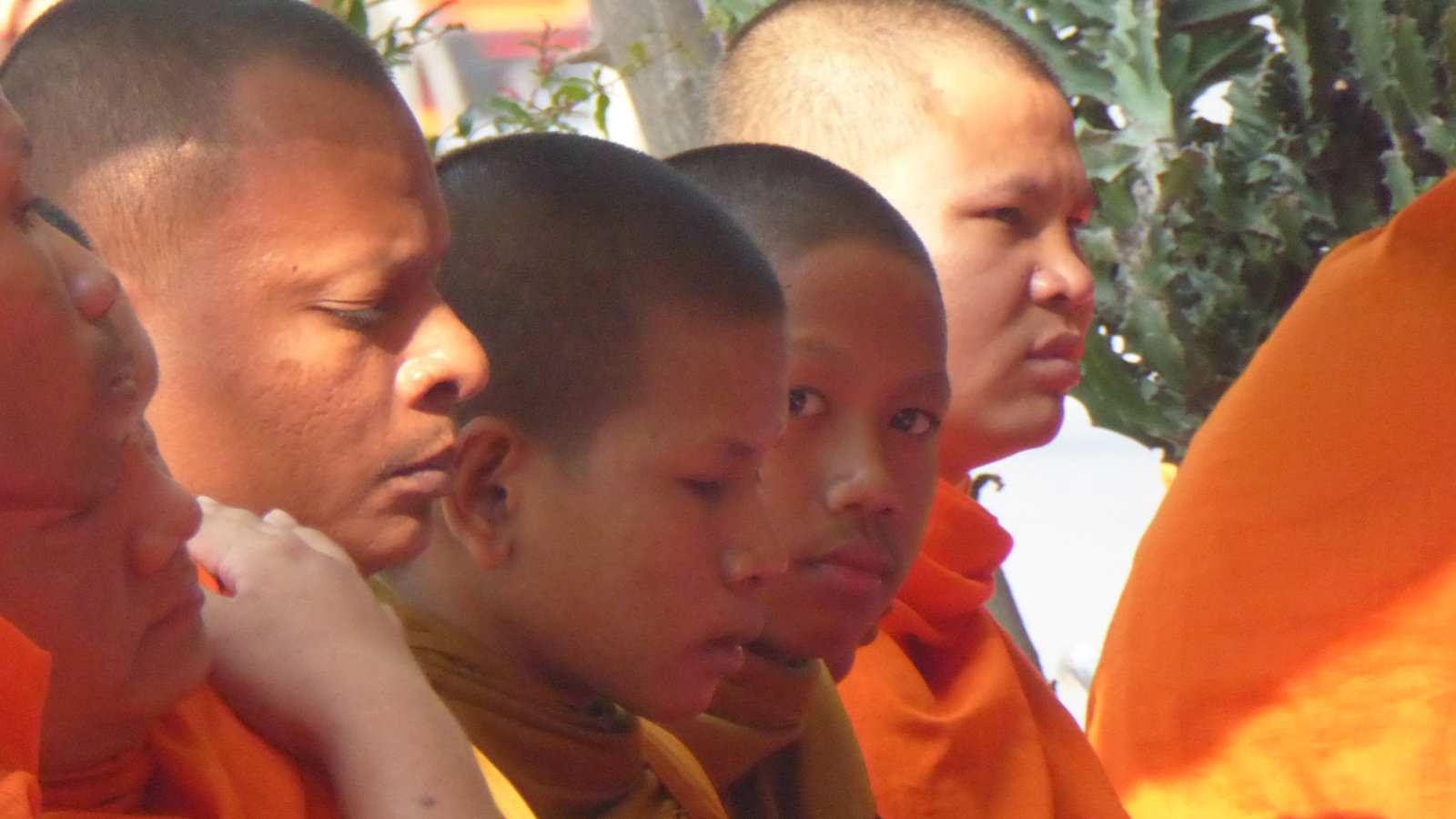
15. Cambodians celebrate New Years eve in April
The Buddhist New Year is celebrated in April and is referred to as the Khmer New Year or “Chaul Chnam Thmey”. It is similar to the Songkran celebrations in Thailand and Myanmar. The Cambodian New Year is based on the solar calendar, so that New Year coincides with the end of the harvest season which is why it is held in April.
Chal Chnam Thmey lasts for three whole days rather than just one. To celebrate, people throw water on each other as well as talcum powder. This is their way of wishing each other good luck and a happy new year!
This practice has been banned in major cities like Phnom Penh and Siem Reap. But in 2015, for the first time in over 10 years, it was allowed again in Siem Reap – and by god it was crazy! Every evening that we went out into Siem Reap we returned home looking like members of the Addams Family!
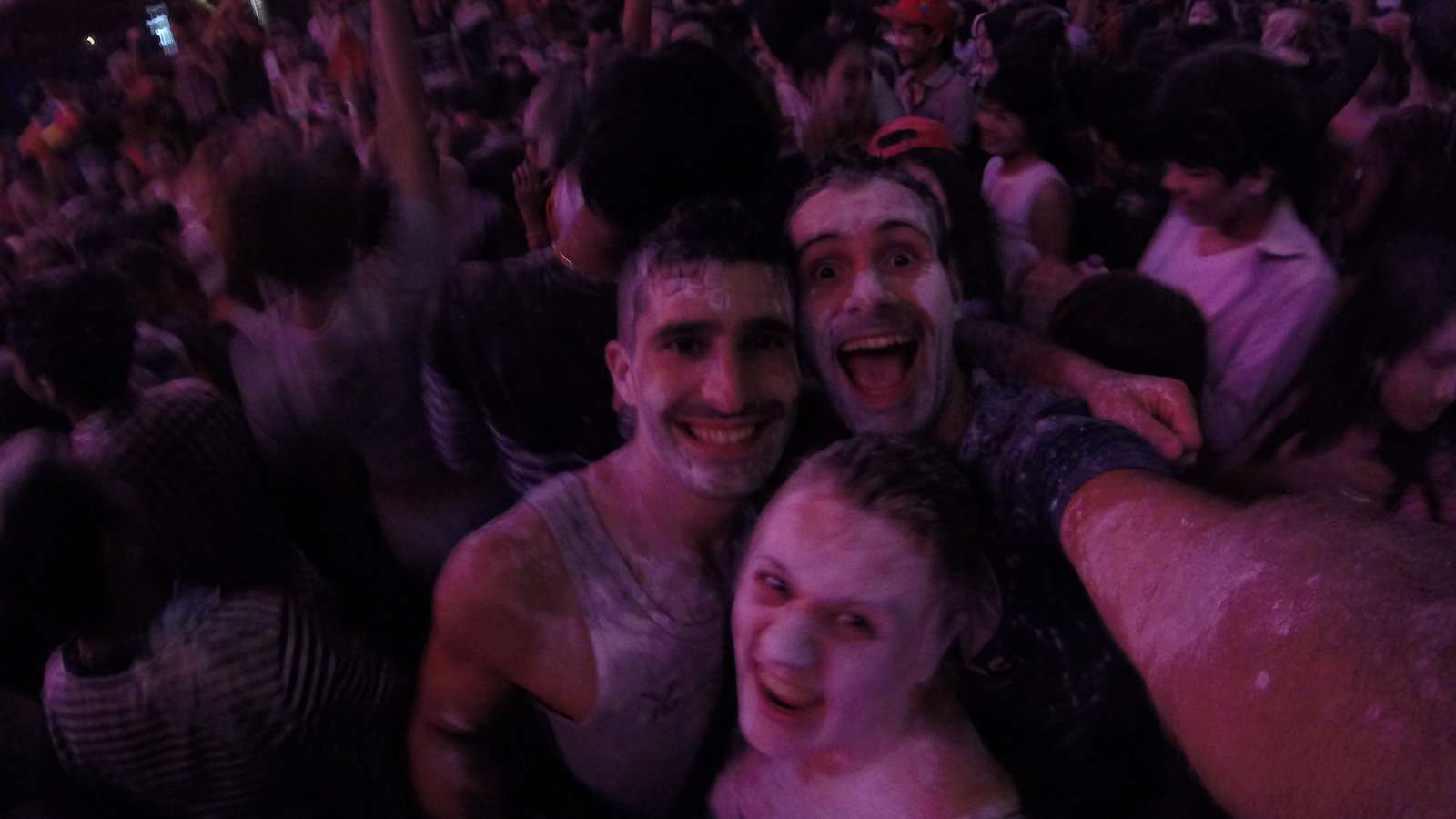
16. Cambodia has one of the best beaches in Southeast Asia
You might think you need to head to Thailand or Indonesia to experience those tropical beaches with white sand and crystal-clear waters that you've seen in photos – but you'd be wrong! Cambodia's southern coast might be small but it's also home to Lonely Beach, one of the best beaches in the whole of Southeast Asia.
Lonely Beach is located on Koh Rong island, and when it's called Lonely, they weren't kidding! Koh Rong is not as built up and filled with tourists as the more well-known Southeast Asian islands, but the eastern side is where the partiers hang out. If you go for a hike through the jungle you'll reach the much more remote and idyllic Lonely Beach.
There are several pretty waterfalls to discover in the island interior, and then the stunning beach! You can also hire a boat if you don't fancy walking. There's one rustic hotel here as well if you want to stay overnight, while avoiding the crowds of Sok San and Kaoh Touch beaches.
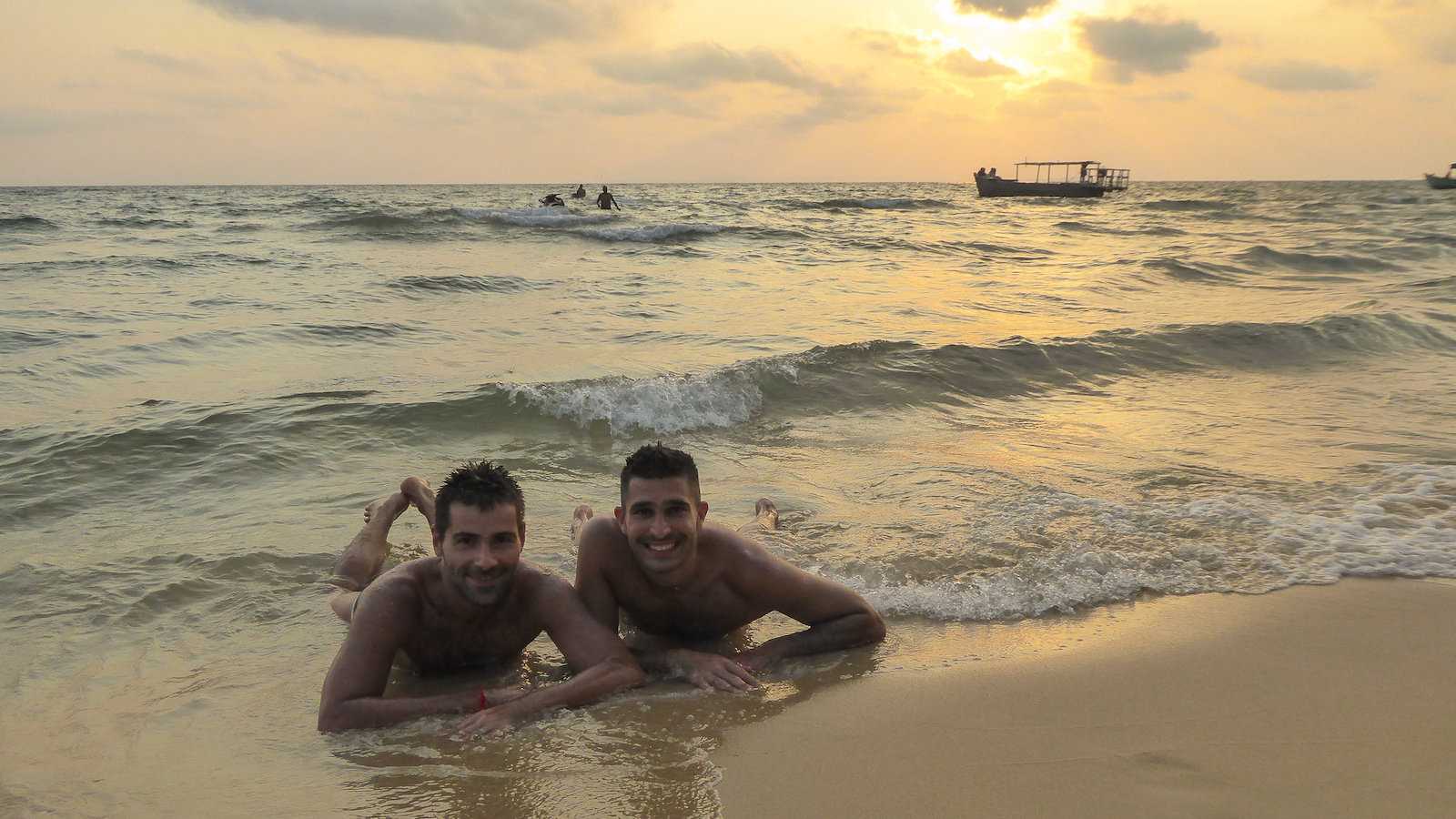
You can learn more about the country by watching our Cambodia travel video!
Happy travels are safe travels
We recommend you always take out a reputable travel insurance before your next vacation. What happens if you suffer from illness, injury, theft, or a cancellation? Many travelers forget about it and regret it when something happens. Better to pay a small price and have the peace of mind and not worry.
Read more travel adventures like this in our book!
We've published our very own gay travel book called, ‘Out in the World'. It has all our practical safety tips, first-hand advice, and travel stories from some of our favorite destinations.
We hope it inspires you to have a fun and safe trip!
Click on the book to order:

For more inspiration:
- Read more about our experiences discovering food in Cambodia
- Plan your trip with this gay Cambodia travel guide
- Find out what it's like growing up gay in Cambodia in our interview with Aaron from Phnom Penh
- Make sure you also visit the very gay friendly country of Thailand
- And explore Bangkok's fabulous gay neighborhood
- If you're heading in the other direction, here's our gay travel guide to Vietnam
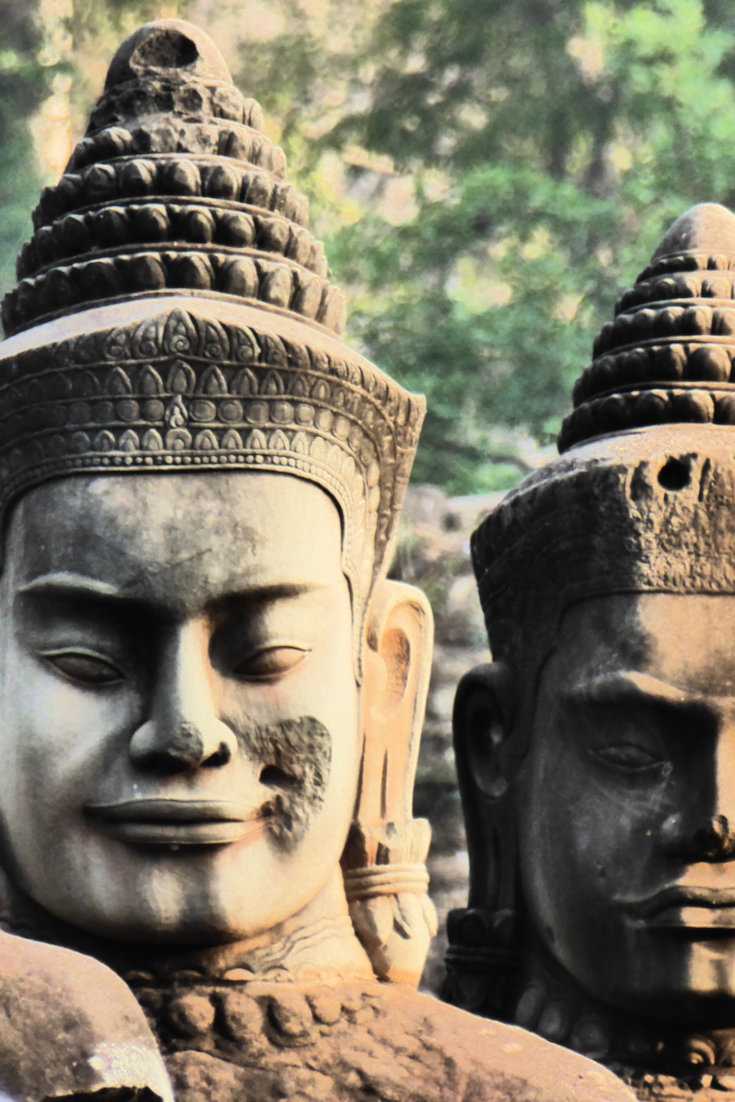


Sal
Monday 24th of August 2020
Spain, Portugal, Bolivia, San Marino and Afghanistan also feature buildings on their flags.
Stefan Arestis
Monday 24th of August 2020
They sure do :)
Harry Lazuardi
Saturday 2nd of November 2019
I love Cambodian Royal King, the former ballet dancer, I wish I could meet him someday....
Clare Smith
Monday 2nd of December 2019
me too darl
Stefan Arestis
Sunday 3rd of November 2019
Me too :)
person
Tuesday 15th of October 2019
loved fact number one
Stefan Arestis
Wednesday 16th of October 2019
Thanks :)
joan
Tuesday 15th of May 2018
:)
Nomadic boys
Wednesday 16th of May 2018
Thanks!
jessica
Tuesday 15th of May 2018
i just came back from cambodia, i love it there and i love your website. Thanks for this
Nomadic boys
Wednesday 16th of May 2018
Thanks for reading Jessica :)